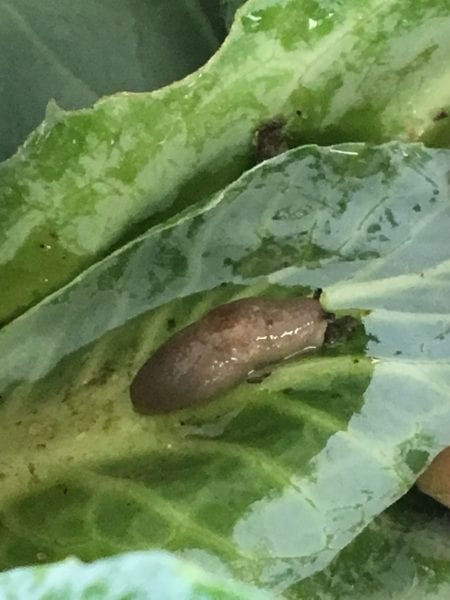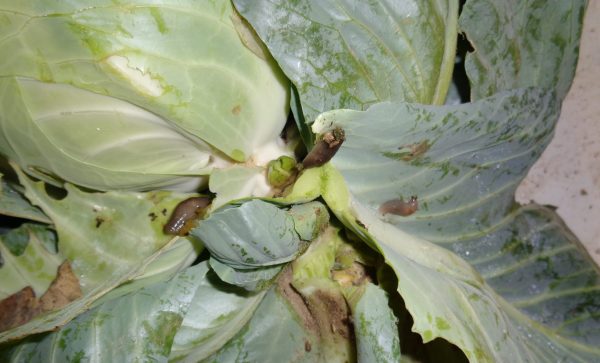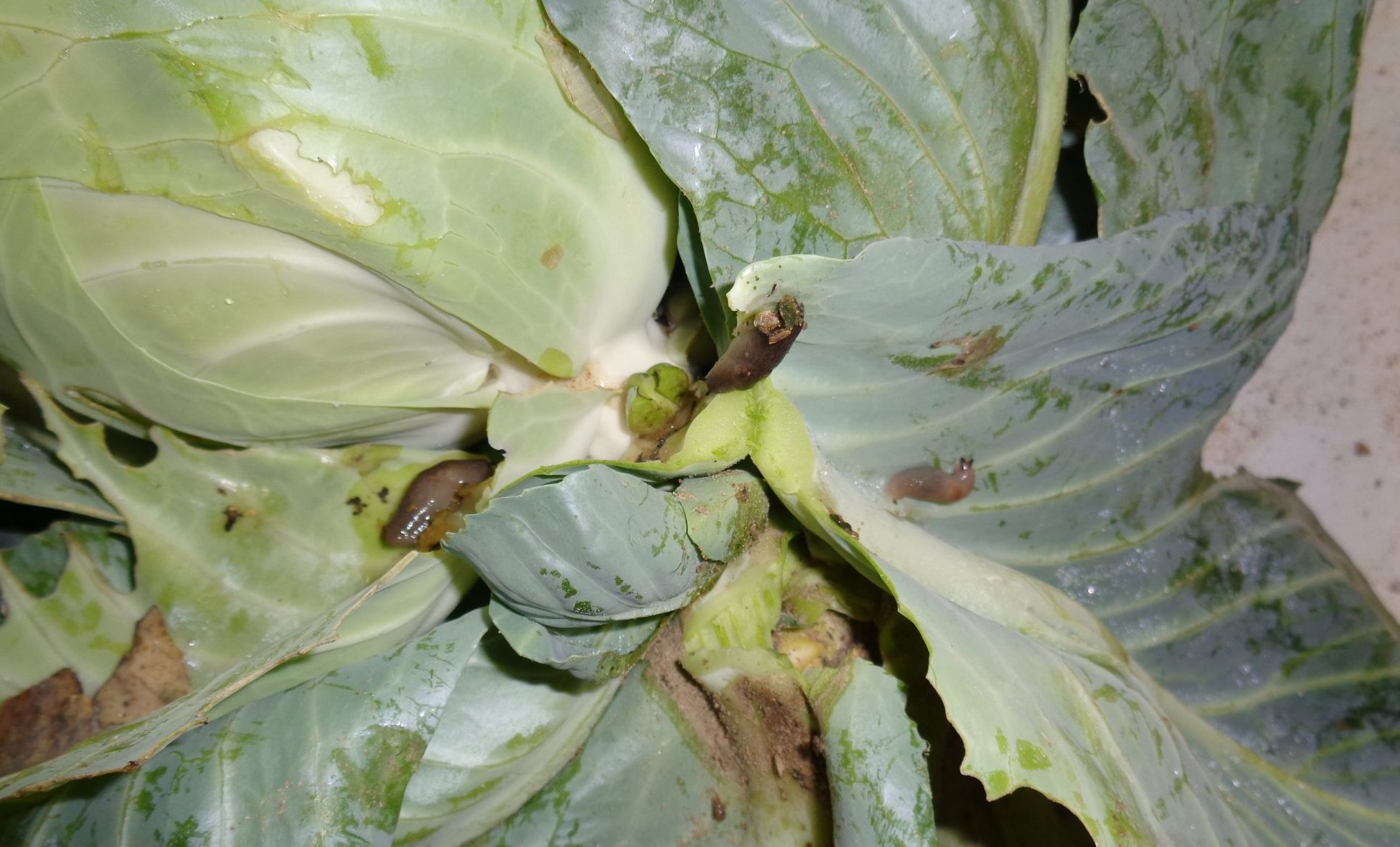Farming

Many factors can contribute to slug infestations in vegetables. Learn what those factors are and how you can best control and eliminate slugs from your crops.

Figure 1. Cool, wet weather can increase slug infestation in Alabama.
Frequent rainfall and excessive soil moisture can bring problems with snails and slugs (figures 1 and 2) for vegetable gardeners and farmers. In addition, slug buildup can occur in soil that is high in organic matter. Organic matter not only serves as a food source for slugs but also provides shelter from the environment and natural predators.
Slugs are invertebrate animals with soft bodies whereas snails have hard shells that cover most of the body. Slug attacks can occur at various stages of plant growth. In late stages of crop growth, high-intensity activity can lead to direct crop loss and contamination.
Slugs are very common on brassica crops grown during cooler weather in Alabama. Several slugs may hide inside the maturing crop. Many crops have zero tolerance for slug contamination, and this may lead to crop disaster. In recent years we have seen slug activity in cabbage fields along with the presence of yellowmargined leaf beetles, resulting in complex pest outbreaks.
Literature suggests that female slugs lay eggs in soil in small batches in damp areas. Immature stages seem to have a limited foraging distance with repeated feeding in certain areas over several days.
Slug Monitoring
Some publications suggest that upturned plastic pots baited with chicken feed or other cereal-based food (including malted beverages or beer) serve to attract slugs early in the season. However, using several slug traps with baits is often a cumbersome process for farmers and may not reduce pest buildup. Commercial snail and slug traps (available online from ARBICO Organics, for example) is a sufficient system to monitor or trap out slugs in small areas.
Cultural Tactics

Figure 2. Slug infestation in cabbages during wet weather can lead to direct produce loss and contamination.
Manage surface residues and till the soil when necessary to prevent slug buildup. Drain waterlogged areas in and around crop fields when possible, or use abrasive materials such as sand in wet areas not under crop production. Limit irrigation or overhead watering during seasons of frequent rainfall. Use a soil moisture meter or other device to determine crop irrigation needs. Since slugs prefer certain crops (e.g., soft-leaf brassicas), crop rotation, early planting, and timely harvest may help reduce the overall population levels.
Organic Control from Natural Enemies
Carabid beetles. Ground-dwelling carabid beetles are aggressive predators of slugs, but they are insufficient for environmental conditions that favor slugs.
Endoparasitic nematodes. Nemaslug, sold commercially by BASF in the European market, is an organic control option that uses endoparasitic nematodes to destroy slugs. Check availability of these products online and follow label directives before use.
Molluscicides. Slugs are not insects; therefore, insecticides do not control them. Based on our market survey, commercial snail-and slug-control materials typically contain the following active ingredient:
- Iron phosphate (e.g., Sluggo by Monterey, OMRI- certified; Bonide Slug Magic for gardens)
- Volatile oil blend (e.g., Monterey All Natural Snail & Slug spray)
- Diatomaceous earth with amorphous silica (e.g., Perma-Guard Crawling Insect Control)
- Bait premix of iron phosphate and spinosad (e.g., Bug-N-Sluggo by Certis, Monterey Sluggo Plus)
- Sulfur (e.g., Bug-Geta by Ortho)
- Metaldehyde (e.g., Southern Ag Snail & Slug Bait, Deadline Mini-Pellets)
- The drawbacks for some of the listed formulations are their high cost, limited availability, and restricted crops. Use long-term prevention tactics for slug/ snail control before relying on chemical methods. Always read the product label and/or consult the manufacturer when in doubt since field research data is very limited for many products. Check the OMRI (Organic Materials Review Institute) symbol for organic farming use. Use the products on a limited basis or at hot spots to prevent nontarget effects.
- Contact a commercial horticulture regional Extension agent (REA) for correct pest identification and development of an integrated pest management (IPM) plan suitable for your farm or garden. Use the Farming Basics mobile app for pest identification and for contacting the regional Extension agent near you.
 Ayanava Majumdar, Extension Entomologist and State SARE Program Coordinator, Department of Entomology and Plant Pathology, Auburn University; Joe Kemble, Extension Horticulturist and Professor, Department of Horticulture, Auburn University; and Eric Schavey, Regional Extension Agent
Ayanava Majumdar, Extension Entomologist and State SARE Program Coordinator, Department of Entomology and Plant Pathology, Auburn University; Joe Kemble, Extension Horticulturist and Professor, Department of Horticulture, Auburn University; and Eric Schavey, Regional Extension Agent
New April 2021, Slug Management in Vegetable Crops, ANR-2734

